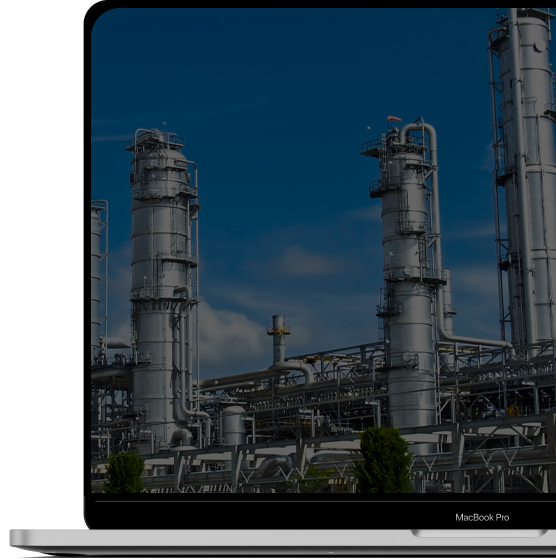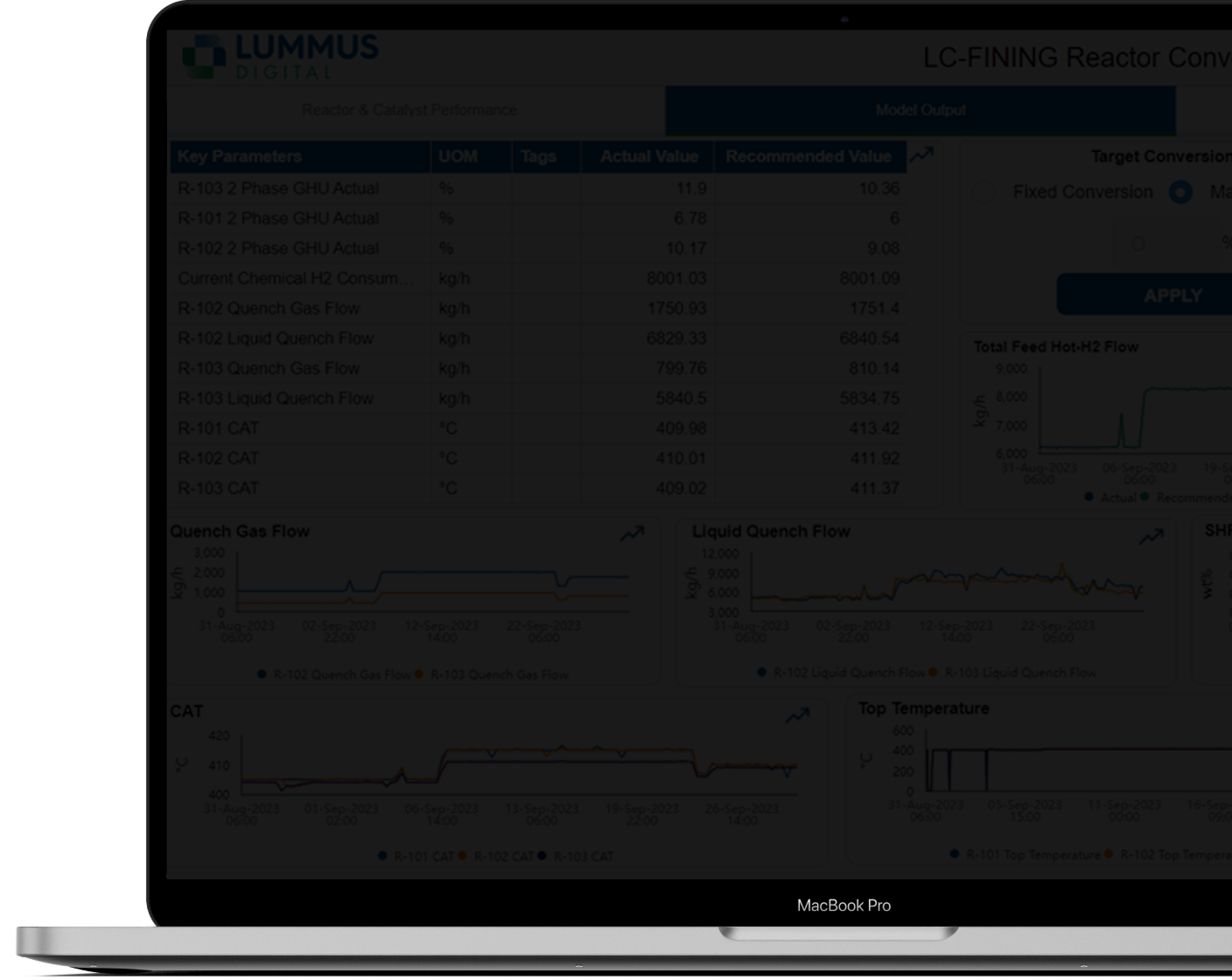- Company
- Products
Petrochemicals
Refining
Sustainability
- Napcon AI
- Our Platform
- Hybrid Process Modelling
- Resources
LC-Fining Reactor
Conversion Optimization
Maximize Yields. Extend Catalyst Life. Elevate Refinery Performance.
Physics Meets AI: Hybrid Models for Optimization.
Watch Demo

LC-FINING Reactor Performance Optimizer
1%
Increase in Reactor Conversion
50%
faster response to potential anomalies
Hybrid Model
Our model optimizes conversion by accurately predicting the maximum achievable yield, leveraging the Feed Operability Index and the predicted SHFT value in Vacuum Residue. This target conversion is then fed into the optimizer to generate precise DCS operator setpoints—such as Heater COT, Reactor CAT, and Feed H₂ flow—guiding operators to achieve optimal conversion efficiently and reliably.

Transform your Challenges into Opportunities
The LC-Fining Reactor Conversion Optimization Model aims to achieve maximum conversion by utilizing DCS and Feed Quality data in real time. The AI/ML platform delivers essential DCS setpoints and recommendations for plant operators and process engineers, facilitating the achievement of desired conversion rates.
Experience increased conversion, real-time predictions of downstream SHFT values, and optimized hydrogen consumption, transforming your operations for enhanced efficiency and profitability.
Pain Point
Unclear Potential Conversion
Benefit
Dynamic Target Conversion: Instantly adjusts to feed quality changes for accurate conversion targets.
Pain Point
Reactor Performance Limited by Vacuum Tower Fouling
Benefit
Optimized Reactor Efficiency: Utilize our Conversion and SHFT model to boost conversion while minimizing vacuum tower fouling.
Pain Point
Insufficient Vacuum Residue SHFT Values
Benefit
Hourly Insights on Vacuum Residue: Leverage our SHFT model for real-time predictions of vacuum residue values.
Pain Point
High Hydrogen Consumption
Benefit
Reduced Excess H2: Lower H₂ consumption during operations.
Pain Point
Reduced Conversion Efficiency Lowers Valuable Product Yields
Benefit
Optimizing temperature and hydrogen flow boosts reactor performance, increasing diesel and naphtha yields while enhancing efficiency and minimizing waste.
Pain Point
Increased Residues Strain Resources
Benefit
Advanced analytics and thermodynamic insights reduce residue, lowering energy and hydrogen consumption while minimizing equipment wear and extending its lifespan.
Pain Point
Catalyst Deactivation Leads to Higher Maintenance Costs and Reduced Refinery Flexibility
Benefit
Extended Catalyst Life: Minimize residue formation and thermal stress using predictive analytics, which reduces wear, maintenance costs, and operational downtime.
Performance Deviation Prediction
Key Parameter Monitoring
The Operator can select the mode of Optimization as
- Fixed Conversion
- Maximum Conversion
Process and Efficiency Trends
Using the FOI and predicted SHFT Value, the model calculates the Potential Conversion that can be achieved for the given Feed Quality.
Operational Benchmarking
The model generates and publishes recommended operator-controlled setpoints required to achieve maximum possible conversion.
Actionable Insights for Improvement
The dashboard displays a comparison plot of “Current Operation” vs. “Recommended Operation”, enabling clear visibility into performance gaps and improvement opportunities.



